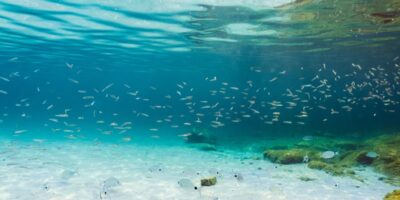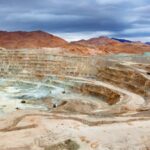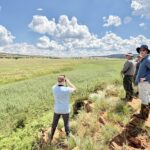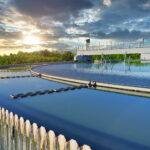With the rapid rise in global temperatures, there is a growing emphasis on the importance of nature-based solutions (NbS) in mitigating climate change. NbS are ‘actions to protect, sustainably manage and restore natural or modified ecosystems, that address societal challenges effectively and adaptively, simultaneously providing human well-being and biodiversity benefits’1.
Recent research indicates that NbS can provide up to a third of the cost-effective mitigation potential needed by 2030 to limit global warming to below 1.5 °C. An example of NbS is blue carbon projects.
Meeting climate goals with blue carbon
The term ‘blue carbon’ refers to atmospheric carbon trapped by oceans and coastal ecosystems such as mangroves, seagrasses and tidal marshes. Studies have shown that blue carbon habitats can capture carbon three to five times more efficiently than mature tropical forests . This is why protecting and restoring them is so important: their survival contributes directly to climate change mitigation.
Ensuring measurable, credible and inclusive nature-based carbon offsets
In the carbon market, the creation and trading of carbon credits produced from NbS can mobilise funding for nature and biodiversity conservation. But there are various barriers to implementing blue carbon offset projects worldwide, such as having limited access to expertise and ensuring credibility. The inability to assess site conditions and accurately estimate carbon offset potential is a major hurdle to advancing blue carbon projects around the world. Leaving such hurdles unaddressed will result in fewer blue carbon implementation efforts aimed at restoring degraded habitats and protecting them for future generations.
How should you start implementing blue carbon offset projects?
Blue carbon projects can help mitigate climate change and bring many benefits to the environment, but how should you start? A first step is to explore available solutions or tools in the market that can:
- Track and identify at-risk blue carbon habitats such as mangroves, seagrass and tidal marshes
Satellite imagery and high-resolution mapping are valuable in identifying climate mitigation potential in a range of habitats – terrestrial, rivers, wetlands, coastal and offshore marine environments. - Accurately estimate and forecast carbon sequestration potential even in remote areas
Using science-based approaches to high-quality data collection and validation can provide reliable information that lets you know where to focus your investment. - Rapidly detect changes at the project site, allowing for agile response and management
Getting near real-time updates through a robust monitoring and reporting system ensures blue carbon projects are meeting their goals and adhering to accreditation standards. - Ensure credibility to the carbon crediting and verification process
Storing and tracking end-to-end project data in a single online repository can support stakeholder communication, increase the transparency of carbon credits and build trust.
‘Nature-Based Solutions are an essential component of the overall global effort to achieve the goals of the Paris Agreement on Climate Change. They are a vital complement to decarbonisation, reducing climate change risks and establishing climate resilient societies.’
The United Nations Global Compact
Not every action or project – even if it involves elements of nature – is automatically recognised as being nature-based. For example, planting non-native trees for carbon offsetting is unlikely to produce the intended biodiversity benefits, and may even reduce the availability of water . As such, using science and ecosystem-based approaches is key to delivering blue carbon projects with meaningful results for safeguarding ecological resilience and biodiversity. Want to talk about ecosystem restoration and all things blue carbon? Link up with me.
[1] What is Coastal Blue Carbon? | National Oceanic and Atmospheric Administration (NOAA)








